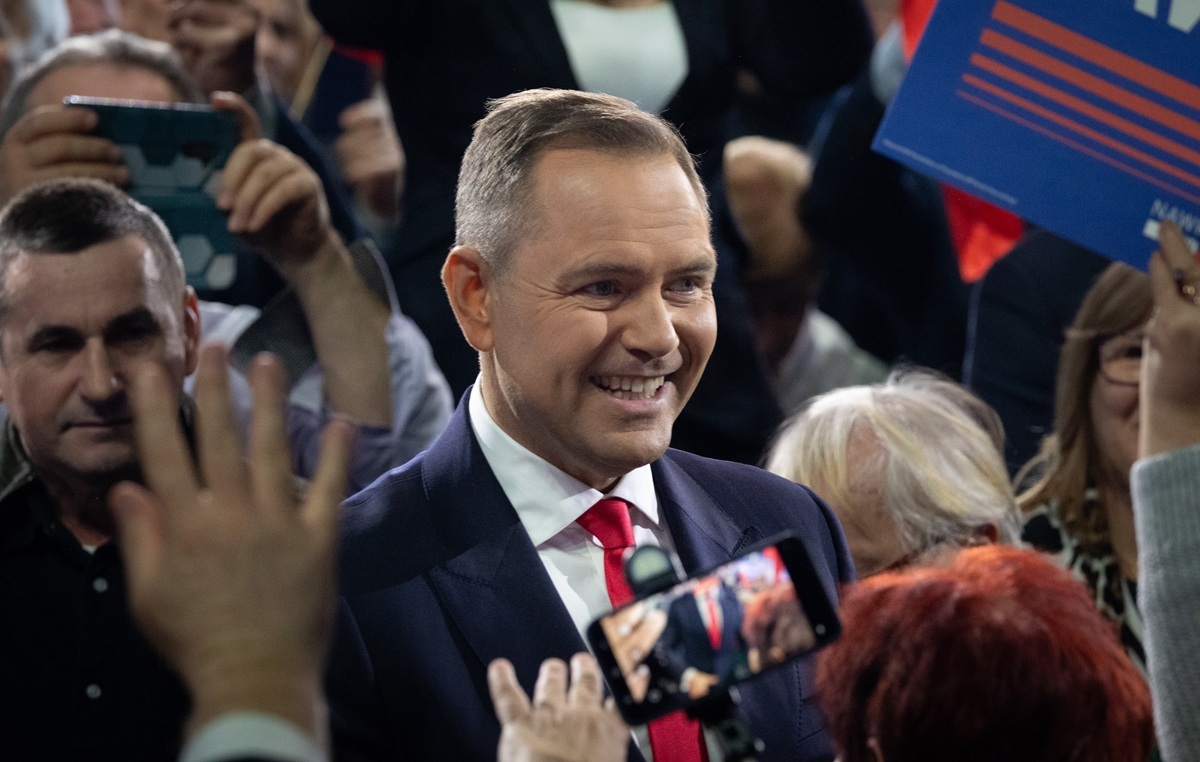
Trump’s „Deadly Serious” Russia Squeeze Shown In Big Tariffs On Ally India
By Simon Watkins of OilPrice.com
-
Trump has doubled tariffs on Indian imports to 50% over New Delhi’s continued purchases of Russian oil.
-
The move risks nearly 1% of India’s GDP this year but underscores U.S. determination to coordinate with the EU on sanctions to weaken Russia’s economy and deter its geopolitical ambitions.
-
India, alongside China and Turkey, remains a top buyer of Russian oil, and Washington is preparing similar tariff threats.
“India is not only buying massive amounts of Russian Oil, they are then, for much of the Oil purchased, selling it on the Open Market for big profits,” U.S. President Donald Trump posted last week on Truth Social. “They don’t care how many people in Ukraine are being killed by the Russian War Machine. Because of this, I will be substantially raising the Tariff paid by India to the USA.”
These words directly implicate buyers of Russian oil as accomplices in the murder of tens of thousands of Ukrainian people in the war started by the Kremlin on 24 February 2022, as indeed they have been. Had these words been said in 2008 when Europe continued to buy Russian oil after it attacked Georgia, or in 201,4 when the continent continued to buy Russian oil after it annexed Ukraine’s Crimea region, then the 2022 full-scale invasion of Ukraine might never have happened. They were not said, it did happen, but this time around, the U.S. President is looking to the future in his actions today. His seriousness is further underlined by the fact that India – long seen as a key ally to Washington in the Asia-Pacific region – now faces big tariffs.
So what does this all mean, and what will happen next?

Slightly in advance of the 8 August deadline imposed by Trump on Russia to make a peace deal with Ukraine, the U.S. doubled its tariffs on India to 50% — a rate that will come into effect on 27 August. The U.S. is India’s top export market, constituting 18% of its exports and 2.2% of its gross domestic product (GDP). Many of the country’s major exporting firms had already stated that they could not deal with the 25% tariffs, as they are too high to absorb, and passing them on to customers makes their products uncompetitive. Initial analysts’ estimates are that 50% tariffs could reduce India’s GDP by nearly 1% this year. But the U.S. knows all this, which is one of the reasons why it has chosen to do it, according to a very senior European Union (E.U.) energy security source who spoke exclusively to OilPrice.com on the day of the new Indian tariffs announcement.
“India is known as a key ally of the U.S. globally, and especially in Asia Pacific, and the thinking is that if he [Trump] is willing to do that to India, then he would be willing to do that to anyone else, and this is absolutely the case – he [Trump] is deadly serious on squeezing Russia’s economy from here,” he said. “The message should not be lost on European countries who might be thinking of easing up on the sanctions being rolled out on Russia from now to December 2027 [when the intention is to end all imports of Russian oil and gas],” he added.
Indeed, a closely co-ordinated ramping up of sanctions against Moscow by the U.S. and E.U. is seen by both sides as key to preventing Russian President Vladimir Putin from realising his dream of reconstituting the full scope of the U.S.S.R.’s previous European empire, as analysed in full in my latest book on the new global oil market order. “Trump believes that the continuation of European purchases of Russian oil and gas after the annexation of Crimea, especially in 2014, was key to the Russian action in Ukraine in 2022, as underlined in his comments on the Nordstream gas pipelines [from Russia to the heart of Europe],” he highlighted.
In this context, India has a multi-layered strategic importance to the U.S. The most notable of these is the objective of positioning it as the regional counterweight to China’s economic, political, and military presence in the Asia-Pacific region, as analysed in full in my latest book on the new global oil market order. Washington’s efforts in this regard intensified following the 15 June 2020 clash between Chinese and Indian troops in the disputed territory of the Galwan Valley in the Himalayas, as the U.S. believed this marked a new push back strategy from India against China’s policy of seeking to increase its economic and military alliances through its multi-generational power-grab project, the ‘Belt and Road Initiative’ (BRI). The U.S. further believed that this push back might also be echoed in India’s economic desire to finally make substantive progress on its ‘Neighbourhood First’ policy as an alternative to China’s BRI programme. However, for this to work, India would need access to secure energy sources over the long term, as – like China – it has few oil and gas sources of its own. Indeed, given the potential economic growth projections for India, the International Energy Agency forecast that the Asian sub-continental power would constitute the biggest share of global energy demand growth at 25% in the coming two decades. In fact, the IEA predicted India would overtake the European Union as the world’s third-biggest energy consumer by 2030. It was at this point – in Trump’s first term as president – that the plan was hatched to link this plan to use India to challenge China as Asia’s major power in parallel with a corollary objective to use the UAE to promote further relationship normalisation deals (‘Abraham Accords’) between Israel and key Arab states in the Middle East. This remains a second key reason why India is so important to Washington.
Nevertheless, India – along with China and Turkey – is still one of the biggest buyers of Russia’s energy exports three years into Moscow’s war in Ukraine. According to industry figures, last month saw it receive 1.6 million barrels per day (bpd) of oil from Russia, while China imported around 1 million bpd and Turkey about 500,000 bpd. Over the entirety of 2024, China was the largest buyer of Russian oil, at about 2.2 million bpd, followed by India on 1.76 million bpd, and Turkey on 0.3 million bpd. The U.S. has already warned China that ongoing imports of Russian oil could lead to huge tariffs being imposed on the country, according to the E.U. source. “During the talks [end-July U.S.-China trade talks in Stockholm], [U.S. Treasury Secretary Scott] Bessent told his opposite number [Vice Premier He Lifeng] that legislation [‘Sanctioning Russia Act of 2025’] is being drawn up in Congress authorising the imposition of up to 500% tariffs on countries that buy sanctioned Russian oil,” he exclusively told OilPrice.com last week. In reality, the Act goes wider to encompass any country that “knowingly sells, supplies, transfers, or purchases oil, uranium, petroleum products, or petrochemical products that originated in the Russian Federation”. It currently has 84 listed co-sponsors in the U.S. Senate alone, according to the U.S. Congress website, and the Speaker of the House has also indicated his chamber’s support to pass the bill.
The U.S. has also suggested to China that it may treat Beijing’s assistance to Russia in much the same manner as it has started to treat the same for Iran. This was seen in the very recent U.S. State Department announcement on Iran-related sanctions that it would impose sanctions on 20 entities it believes are engaged in trading Iranian oil and petrochemical products, including China’s Zhoushan Jinrun Petroleum Transfer Co., an oil terminal in the greater Zhoushan port area. Under Secretary of the Treasury for Terrorism and Financial Intelligence Brian E. Nelson said of these China sanctions that:
“The Iranian regime continues to fuel conflict in the Middle East to fund its destabilizing activities, [and] Today, the United States is taking action to stem the flow of revenue that the regime uses to support terrorism abroad, as well as to oppress its own people.”
Zhoushan Jinrun was highlighted by the State Department for: “…knowingly engaging in a significant transaction for the purchase, acquisition, sale, transport, or marketing of petroleum or petroleum products from Iran”. The port is the fourth of China’s to be sanctioned by Washington in recent weeks, following similar actions against Huaying Huizhou Daya Bay Petrochemical Terminal Storage in March, Guangsha Zhoushan in April, and Dongying Port in May.
“More is to come,” the very senior U.S. legal source told OilPrice.com at the time of the sanctions announcement and could include a dramatically increased list of blacklisted Chinese officials, businesses, banks, financial houses, ports, ships, and supportive infrastructure to the facilitation of Russian oil imports.
Tyler Durden
Tue, 08/12/2025 – 13:00












